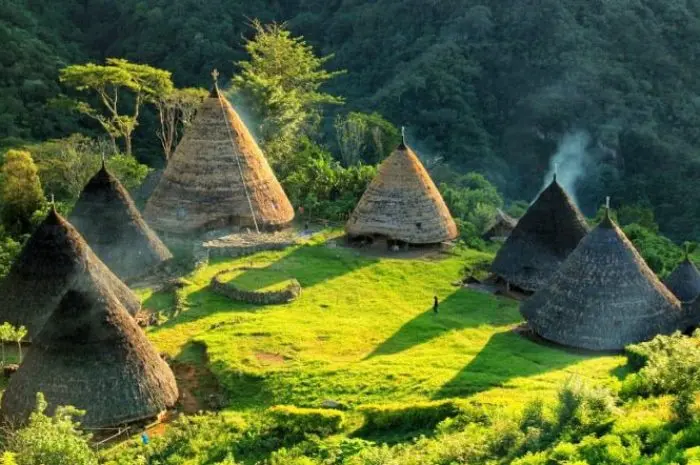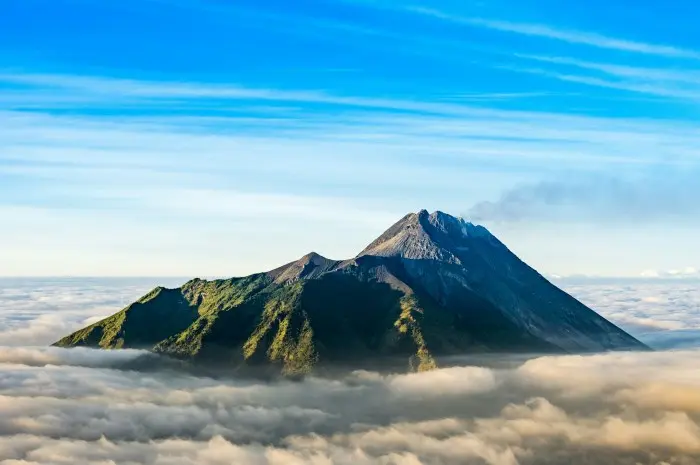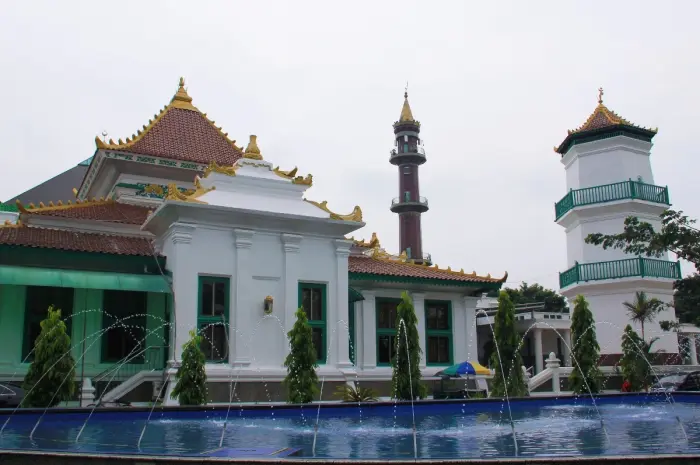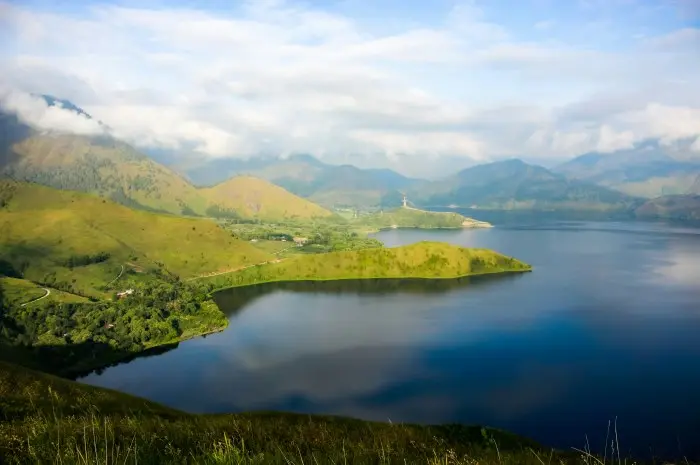Nestled amidst the rugged terrain of the Flores Mountains in East Nusa Tenggara, Indonesia, Wae Rebo Traditional Village stands as a testament to the rich cultural heritage and sustainable way of life of the Manggarai people.
Perched at an altitude of over 1,100 meters above sea level, this remote village is renowned for its traditional architecture, pristine natural surroundings, and strong sense of community.
In this comprehensive guide, we’ll delve into the history, culture, and sustainability practices of Wae Rebo Traditional Village, offering insights into why it’s a must-visit destination for travelers seeking authentic cultural experiences in Indonesia.
Discovering Wae Rebo Traditional Village
Wae Rebo Traditional Village is located in the district of Manggarai, approximately 1,200 kilometers east of Bali.
Accessible only by a challenging trek through dense forests and steep mountain trails, the village remains isolated from modern conveniences and infrastructure, preserving its traditional way of life and cultural heritage.
Traditional Architecture
What sets Wae Rebo apart is its unique architecture, characterized by “Mbaru Niang” houses – traditional cone-shaped structures made of bamboo, wood, and thatch.
These communal houses serve as the focal point of the village, housing multiple families under one roof and serving as gathering spaces for community events, rituals, and ceremonies.
The intricate construction of Mbaru Niang houses reflects the ingenuity and craftsmanship of the Manggarai people, who have preserved this architectural tradition for generations.
Sustainable Living Practices
Wae Rebo Traditional Village is not only a testament to traditional culture but also a model of sustainable living practices.
The village is entirely self-sufficient, relying on traditional farming methods, rainwater harvesting, and communal resources to meet its basic needs.
Visitors can learn about organic farming techniques, traditional herbal medicine, and eco-friendly practices that promote harmony with nature and minimize environmental impact.
Community Spirit
At the heart of Wae Rebo Traditional Village is its strong sense of community and cultural pride. The villagers, known as “Wae Reboese,” are warm, welcoming, and eager to share their customs, traditions, and way of life with visitors.
From participating in traditional dance performances to learning about ancient rituals and beliefs, travelers can immerse themselves in the rich cultural tapestry of the village and forge meaningful connections with its residents.
The Journey to Wae Rebo
Visiting Wae Rebo Traditional Village is an adventure in itself, requiring a multi-day trek through rugged terrain and challenging landscapes.
Most travelers begin their journey in the town of Ruteng, where they hire local guides and porters to lead them on the trek to Wae Rebo.
The trek typically takes around 4-5 hours and involves traversing dense forests, crossing rivers, and navigating steep mountain trails.
Despite the physical exertion, the journey is rewarded with breathtaking views of cascading waterfalls, lush valleys, and towering peaks along the way.
Cultural Immersion and Experiences
Upon arriving at Wae Rebo Traditional Village, visitors are greeted with a traditional welcome ceremony and invited to participate in various cultural activities and experiences.
These may include learning traditional weaving techniques, joining in communal meals prepared using local ingredients, and engaging in storytelling sessions with village elders.
Visitors can also spend the night in one of the Mbaru Niang houses, experiencing firsthand the simplicity and tranquility of village life under the starlit sky.
Preserving Cultural Heritage
In recent years, Wae Rebo Traditional Village has gained recognition as a UNESCO World Heritage Site and has attracted increasing numbers of tourists seeking authentic cultural experiences. However, the influx of visitors has also raised concerns about preserving the village’s cultural integrity and sustainability.
To address these challenges, local communities and government authorities have implemented measures to promote responsible tourism, support local livelihoods, and safeguard the village’s cultural heritage for future generations.
Conclusion
The Wae Rebo Traditional Village stands as a shining example of cultural resilience, sustainable living and community spirit in the Flores Mountains, Indonesia.
By preserving its traditional architecture, implementing environmentally friendly practices, and sharing its cultural heritage with visitors, the village has become a beacon of hope for cultural preservation and sustainable tourism in the region.
For travelers seeking authentic cultural experiences and meaningful connections with local communities, Things to do in Labuan Bajo offers a glimpse of a way of life that has not changed with time – a testament to the enduring power of tradition, community and cultural pride.



